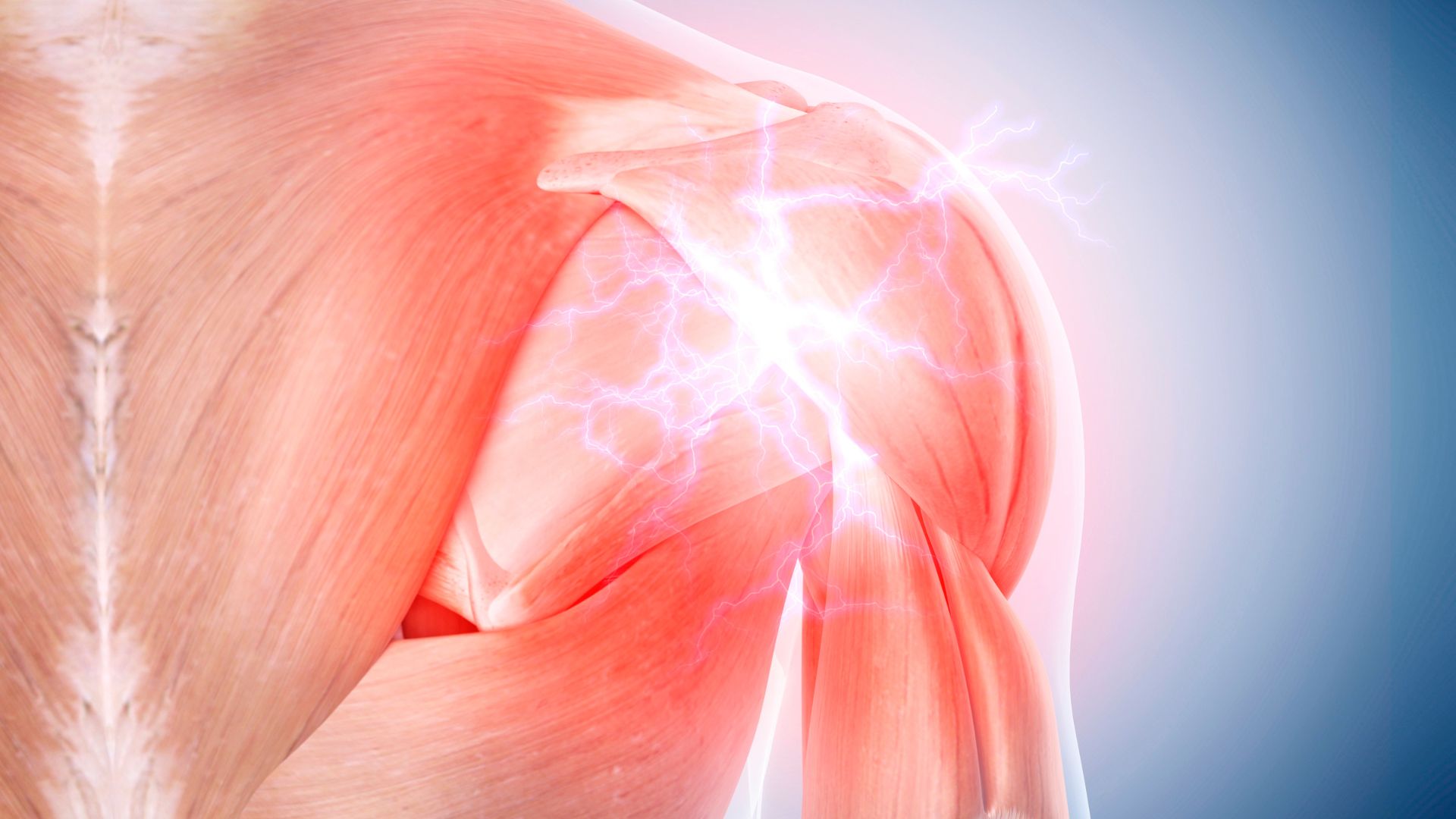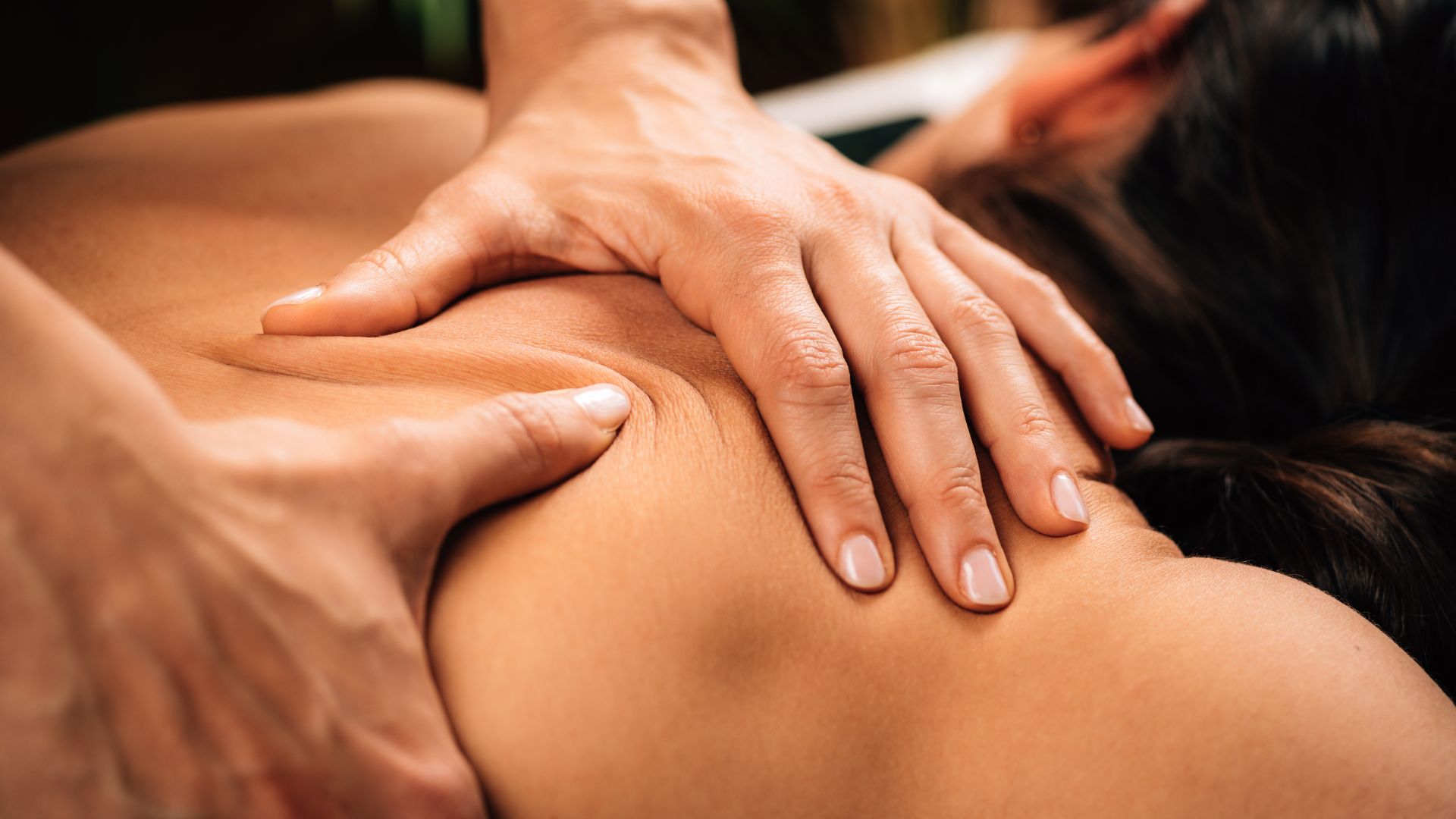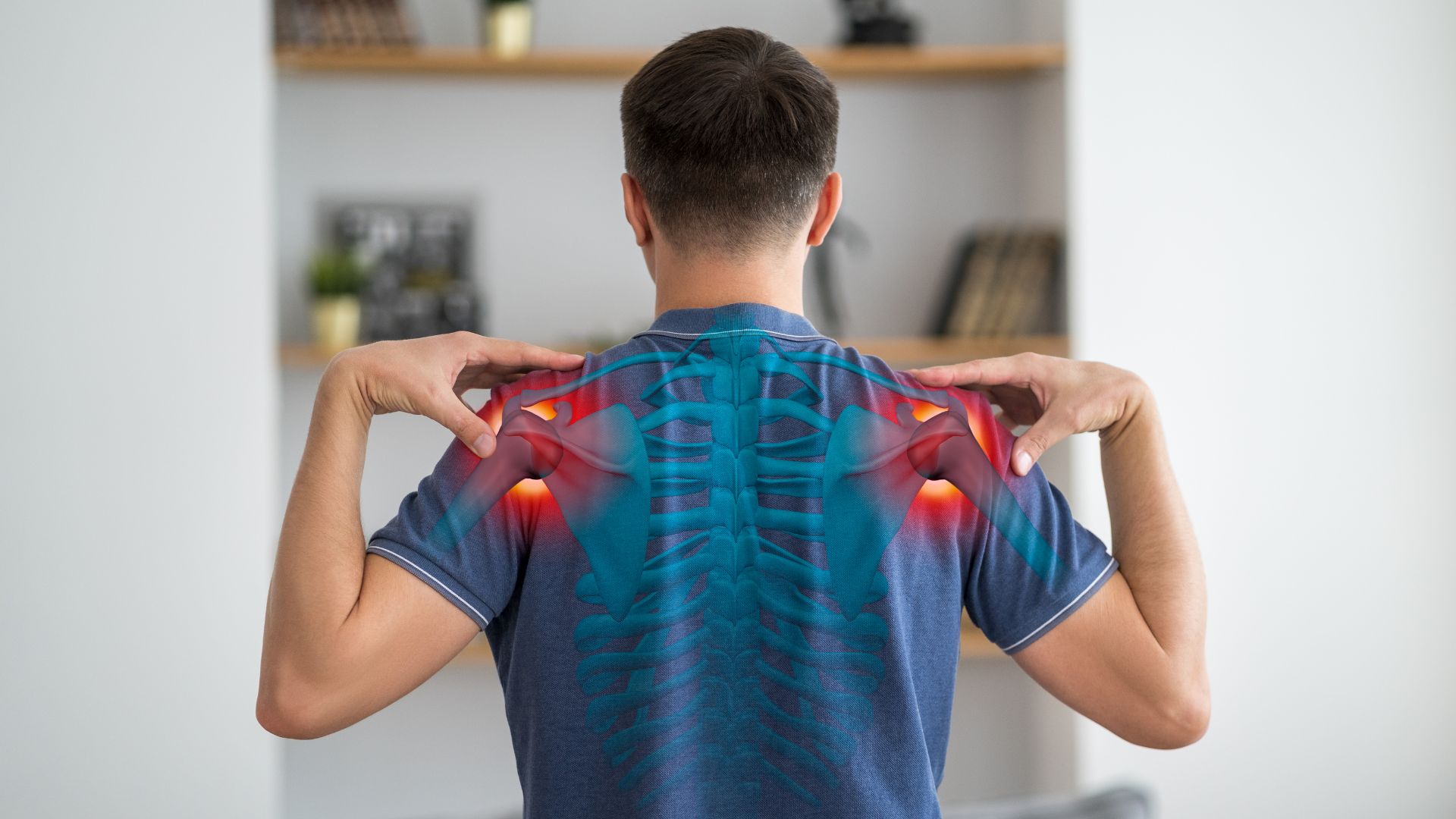Frozen Shoulder Massage: What Helps, What Doesn’t, and When to Seek Minimally Invasive Care
October 27, 2025
CONTENTS
- Understanding Frozen Shoulder and Why Massage Alone May Not Be Enough
- Is Massage Good for Frozen Shoulder Pain Relief?
- Stage-Based Approach — How Massage Changes Across Recovery
- Beyond Massage — Non-Surgical and Minimally Invasive Options for Persistent Frozen Shoulder
- Recovery Timeline — What to Expect
- When to See a Pain Specialist in Singapore for Your Frozen Shoulder
- Safeguard Your Shoulder Health Today
- FAQs and Safety Tips for Frozen Shoulder Massage
- Experiencing pain?
Frozen shoulder can make simple tasks like combing your hair, reaching for a cup, or sleeping comfortably unexpectedly painful.
In Singapore, many patients seek massage for relief. While massage can ease tightness and pain, frozen shoulder often requires more than massage alone.
This article explains what massage can and cannot do, how treatment should adapt to each recovery stage, and when to consider non-surgical, minimally invasive care at Singapore Paincare.
Quick Take: Key Points at a Glance
- Massage can ease muscle tension but does not treat the tight joint capsule that causes frozen shoulder.
- Gentle massage works best in the early recovery phase; avoid deep pressure during painful flare-ups.
- If stiffness or pain persists beyond 3–6 months, your doctor may recommend non-surgical options such as Coreflex, PRP, or Radiofrequency therapy under the MYOSPAN or Neurospan systems.
- Early consultation with a pain specialist in Singapore can help support recovery and prevent long-term stiffness.

Understanding Frozen Shoulder and Why Massage Alone May Not Be Enough
What Is Frozen Shoulder (Adhesive Capsulitis)?
Frozen shoulder, or adhesive capsulitis, occurs when the shoulder capsule becomes thickened and inflamed, restricting movement.
It often affects adults between 40 and 60 — particularly those recovering from injury, diabetes, or long periods of immobility.
👉 Learn more: Frozen Shoulder Condition Page
How Massage Fits In
Massage helps release tight muscles around the shoulder blade and upper arm, improving comfort. However, it cannot reverse the inflammation or scarring inside the capsule itself.
That’s why pain specialists often combine massage with physiotherapy or minimally invasive treatments for more comprehensive care.
Is Massage Good for Frozen Shoulder Pain Relief?

When Massage Can Help
- Improves blood flow and reduces surrounding muscle tension
- Promotes relaxation and general comfort
- Complements stretching or physiotherapy during recovery
Gentle strokes and warm compresses are usually suitable when pain is mild.
When Massage Should Be Avoided
During the “freezing” stage, inflammation is more active.
Deep-tissue massage or forceful stretching can worsen pain or prolong healing.
Avoid:
- Firm pressure on the shoulder joint
- Aggressive stretching beyond your pain limit
- Frequent sessions during acute pain flares
Common Massage Types Used
- Swedish massage: light, soothing strokes to relax muscles
- Myofascial release: helps reduce soft-tissue restriction
- Trigger-point therapy: relieves referred pain from neck or shoulder muscles
Stage-Based Approach — How Massage Changes Across Recovery
Freezing Stage (Pain and Inflammation)
- Shoulder feels painful and movement is limited
- Use gentle heat, light massage, and medical pain control as advised
- Avoid strong pressure or prolonged sessions
Frozen Stage (Stiffness Dominant)
- Pain may ease slightly, but stiffness remains
- Combine soft-tissue massage with guided physiotherapy
- Regular stretching under supervision helps prevent further joint tightening
Thawing Stage (Recovery)
- Gradual improvement in motion and comfort
- Massage supports flexibility and circulation
- Add gentle strengthening and mobility exercises under guidance
👉 Learn more: 3 stages of Frozen Shoulder (Adhesive Capsulitis)
Beyond Massage — Non-Surgical and Minimally Invasive Options for Persistent Frozen Shoulder
If pain or stiffness continues despite months of massage and physiotherapy, medical treatment may be considered.
At Singapore Paincare, we provide non-surgical, minimally invasive procedure that aim to reduce inflammation, regulate nerve sensitivity, and support shoulder mobility.
When Massage Isn’t Enough
You may benefit from further assessment if you experience:
- Pain lasting more than 3–6 months
- Persistent night pain affecting sleep
- Difficulty raising or rotating your arm
- Little improvement despite therapy
Non-Surgical Treatments at Singapore Paincare
Our MYOSPAN and Neurospan treatment apply evidence-based techniques to help manage shoulder pain safely under medical supervision.
MYOSPAN Treatments
- Coreflex Injection Therapy – helps reduce inflammation and support shoulder flexibility
- PRP (Platelet-Rich Plasma) Therapy – supports natural healing of shoulder tissue
- Botulinum Toxin Injection – helps relax overactive shoulder muscles
Neurospan Therapies
- Radiofrequency Therapy – targets overactive nerves to help reduce pain signals
- Pulsed Radiofrequency Treatment – helps patients with long-term or recurrent shoulder pain
👉 Learn more: MYOSPAN Treatments | Neurospan Treatments
Combining Treatment with Rehabilitation
For best results, these therapies are usually paired with:
- Gentle physiotherapy and stretching
- Gradual resumption of massage once inflammation subsides
- Regular follow-up to monitor progress
Who May Benefit
- Patients wishing to avoid shoulder surgery
- Those with limited motion after months of therapy
- Individuals seeking timely, clinically guided recovery
Recovery Timeline — What to Expect
Frozen shoulder recovery typically takes 12 to 24 months, depending on the severity of the condition and adherence to therapy.
| Stage | Expected Progress |
| Weeks 1–4 | Pain management and inflammation control |
| Months 1–3 | Gradual improvement in mobility |
| Months 3–6 + | Strengthening and improved shoulder function |
Consistent exercise and regular reviews with your specialist help maintain progress.
When to See a Pain Specialist in Singapore for Your Frozen Shoulder
If you’ve been struggling with shoulder stiffness that doesn’t improve despite regular stretching or massage, it may be time to see a pain specialist. Massage can help relieve tension and complement rehabilitation, but persistent stiffness may signal an underlying condition that requires medical evaluation.
At Singapore Paincare, Dr. Bernard Lee Mun Kam, Pain Specialist, treats frozen shoulder using non-surgical, minimally invasive procedures designed to safely reduce pain, restore movement, and support gradual, long-term recovery.
👉 Meet our frozen shoulder pain specialist: Dr Bernard Lee Mun Kam
Safeguard Your Shoulder Health Today
Book an appointment to discuss your condition and explore suitable, evidence-based treatment options with our pain specialists in Singapore.
FAQs and Safety Tips for Frozen Shoulder Massage
-
Can massage cure frozen shoulder?
No. Massage can help relieve discomfort but cannot release the joint capsule. It works best as part of a comprehensive care plan.
-
How often should I get a massage?
Once or twice weekly, depending on pain level and recovery stage. Always consult your doctor first.
-
Can I have massage after a PRP or Coreflex injection?
Wait at least 48–72 hours and confirm with your pain specialist before resuming massage.
-
Is TCM Tuina safe for frozen shoulder?
Some patients find Tuina relaxing, but deep pressure during the “freezing” stage may worsen inflammation.
-
When should I see a pain specialist?
If pain limits daily activity for more than 2–3 months despite massage or physiotherapy.
Safety Tip: Stop massage if you notice swelling, redness, or sharp pain lasting beyond 48 hours.
